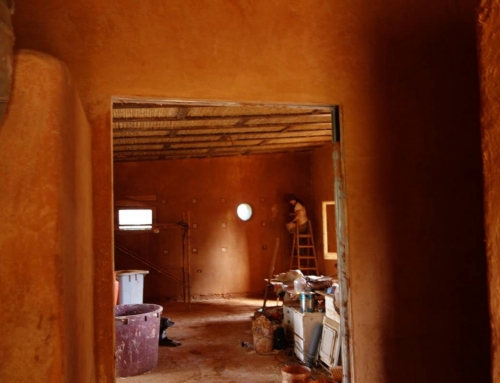We were searching for a place for our tent and these days the weather is unpredictable, so we have been trying to find shelter in barns or sheds by farmers. This day we were in the Swabian Alps near the town of Scheer. We rode up the road to a farm. After asking around, a kind old man would come to us and ask what we were doing at the farm. We did our best to explain in German that we were looking for a place to set up our tent, he showed us a barn where the food for the animals is stored and we could set up our inner tent, perfect spot.
Later we learned that this was a milk farm which had existed since the 18th century and had changed from a farm kept by the local monastery, later it was owned by a local duke. Seniors father worked at the farm for 25 years and then leased the farm for another 25 years. Until senior would buy the farm in the 1960’s. The details are scarce due to the language barrier as no one at the farm spoke English. The farm is now run by the two sons of Senior. We found this an interesting farm due to the history and the modern structure the farm now had.
The next morning Senior gave us a tour of the farm and the high tech BIO gas installation which we both found very interesting. Senior, a man of the age around 75, got his car out and said: “jump in and I will show you our farm”. We drove up to the cows, senior explained that they have 120 milk cows and 120 cows that are growing up to be a milk cow. The best cows produce 10500 liter milk per year, to us this information is new and cannot really compare with other information but we found it a whole lot of milk. We were shown around the cows and saw how the cows lived. These milk cows lives on a strict diet and stay in their stables all their life. We found it a bit of a pity for the cows that they stay in the stables all life and at the same time we understand that this is a production of milk and circumstances need to be controlled to provide the best and most milk. Senior would guide us further around the farm, storage of semen for breeding of the cows, the milk machine which also keeps an eye on the individual cow and state of milk production. Interesting to see the function of the milk farming. There was also a calf born that night and he was steaming next to his mother.
Senior had told us about the Bio Gas installation, this we found even more interesting to go and see. This power plant was running on cow feces mixed with crops. The plant produces 500KW electricity and 500KW heat. This is a big installation with many steps before the feces and crops become bio gas. See below for an example of the steps:
The electricity is used by the farm it self and exceeding electricity is sold to the grid network and the heat is used by a factory down the road. The factory used to use oil and is now using this heat instead. The heat is also used for drying of wood instead of natural drying the wood is now dry within a week and natural drying takes years.
In contrast to our post about the brown coal mining in Germany which was a bit of a negative surprise to us this is then a nice surprise to see the progress of renewable energy sources. Stated in wikipedia Germany is Europe’s biggest producer of Bio Gas:
“Germany is Europe’s biggest biogas producer
We really enjoy being able to look in to these stories and learn from the people along our route, thanks a lot for this opportunity.







Leave a Reply